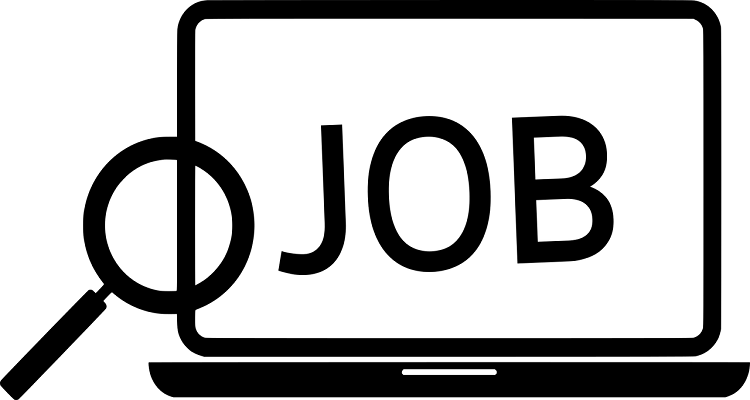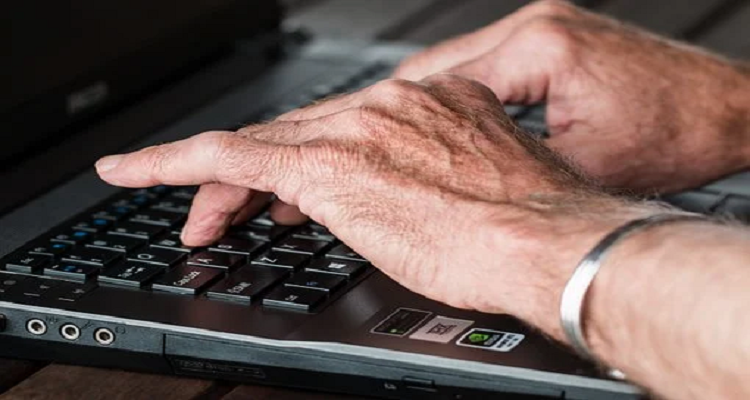Hiring new employees comes with new tasks and federal workplace compliances that you must adhere to. Of course, as the pandemic continues to change the way we work and live, it can put a considerable burden on how we hire and manage our employees. Every employee you hire must complete Form I-9 to prove that they have the authorization to work in the United States.
What about I-9 verification for remote employees? Although many employees have already worked remotely before the pandemic, they have had to have their I-9 documentation reviewed in person. Immigration and Customs Enforcement has created ways to keep your company compliant to fix this problem.
If you want to learn more about the current I-9 verification process for remote workers, continue reading below. This brief I-9 verification guide will walk you through how you can stay compliant even when working remotely.
What Is Form I-9?
Form I-9 is a form the United States Citizenship and Immigration Services (USCIS) requires from employers that prove that their employee is eligible to work in the United States.
The I-9 form verifies the employee’s identity by requiring the employer to identify their documentation physically. The United States Citizenship and Immigration Services often updates their forms periodically, so be sure to verify that you are using their current version of the form by checking out their website.
What Is I-9 Verification Used For?
Immigration laws require employers only to hire people who have the legal right to work in the United States. This includes non-citizen nationals, aliens authorized to work in the country, U.S. citizens, and lawful permanent residents. To ensure compliance, employers must verify the employment authorization and the identity of each person they hire.
The I-9 form is a hard copy record of the required verification process. In the event of an audit or in the event that someone needs to verify the eligibility of a working person, you can show them the I-9 form. Once you complete the form with your employee, be sure to keep a record of it.
I-9 Verification Process
The I-9 form has three sections you must complete. The employee completes the first section, and it asks about their immigration status, personal information, and citizenship status. If there is a translator or a preparer needed to help complete the form for the employee, there is an area in the first section for them to sign and list their information.
Newly hired employees must receive this form no later than the first day of work or pay. Once they sign and fill out this section, your employee will need to provide you with identifying documentation to show their eligibility and identity.
Acceptable Documents
There are three lists of documents that your employee can use to show their identity and work authorization. List A documents are documents that both establish employment authorization and identity.
These types of documents are U.S. passports, resident cards, or employment authorization cards. If an employee shows this type of document, they won’t need to show any other kind of documentation to satisfy the I-9 requirement.
List B
If a person does not have any type of document that falls under List A, they can provide a document from List B. If they show a document from List B, they must also show one from List C. List B is a list of documents that establish someone’s identity. This can be a driver’s license, a school ID card with a photograph, a voter registration card, etc.
List C
List C establishes a person’s work authorization. This includes a U.S. social security card number, birth certificate, or a Native American tribal document. If you bring this document to prove your work authorization, be sure to get something that verifies your identity as well.
Section Two of Form I-9
The employer or their authorized representative completes the second section of the form. The employer must complete this form within three business days of the employee’s first workday.
First, you must review section one to ensure that the employee filled it correctly, and then you must review the USCIS’s list of acceptable documents. With the employee present, ensure that the document they provide to you is an acceptable document listed on the USCIS’s lists.
Additional steps the employer must take:
- Physically examine each document and determine if it is genuine and is related to the employee
- Enter the document title, issuing authority, expiration date, and numbers onto the I-9 form
- Sign and date the section
When dating the document, be sure that you use the date you reviewed those documents with the employee. So if you reviewed the documents and the I-9 form with the employee on March 2024, be sure to date the I-9 form with that date.
Section Three of Form I-9
You only need to fill out this section if you rehire or reverify someone. If you rehire a previous employee within three years of their original I-9, you won’t have to redo the I-9. You can either use that previous form or file a new one. All businesses must keep completed I-9 forms for all of their active employees.
Remote Employee I-9 Verification
Due to today’s ever-changing workplace environments, the i-9 verification for remote employees is more complicated. Due to the pandemic, most corporations have switched to remote work instead of having to appear in a physical office space.
The United States Immigration and Customs Enforcement (ICE) has placed numerous deadlines on temporary I-9 verification processes due to the pandemic. In September of 2021, ICE extended the remote verification of Form I-9 until the end of December. Recently, ICE extended it until 2024.
I-9 Verification Process for Remote Employees
Due to the pandemic crisis, the Immigration and Customs Enforcement allowed employers to review I-9 documents via email, secure uploads, fax, etc., and complete the annotations electronically. Even though ICE allowed employers to conduct I-9 verifications online, they advised that when employees came back to the workplace, they would have to review those documents in person to verify their legitimacy.
In addition to that, the Immigration and Customs Enforcement stated that employees are temporarily exempt from the physical inspection process until their employer takes non-remote employment on a consistent, predictable, or regular basis.
Current I-9 Inspection Rules
The remote I-9 verification process is currently short-term, but ICE continues to extend that deadline. For now, Immigration and Customs Enforcement expect employers to verify employment authorization and identity documents in person for employees onboarded remotely within three days after the employee starts working at the employer’s place of business regularly and consistently. The employer can also check those documents three days after the national COVID-19 emergency ends or when ICE terminates the policy.
Different Strategies to Stay Compliant
Although this remote I-9 verification policy had good intentions, it can cause a massive burden for many employers. Even if your enterprise has proper planning, your Human Resource managers may not be able to physically inspect the backlog of all their employees within three days of the policy or national emergency’s end. You and your company can take several different strategies to ensure compliance.
Strategy One
Employers don’t have to wait until 2024 or when all employees come back to the workplace. Instead, they can start physical inspections of those documents sooner as long as the inspections are conducted in a non-discriminatory and consistent way across the board.
For example, the employer should not group people by their nationality or work status, which could be perceived as discriminatory. Employers should not first start with non-citizens and then move on to United States citizens because they could expose the company to discrimination claims.
To avoid any possible discrimination claims, an employer should verify original documents from applicable employees by their department. For example, if you have new remote employees in the sales and customer service departments, you can start with sales and then move on to customer service.
This shows that you aren’t targeting a specific nationality or gender. Instead, you are merely conducting the inspections based on a workgroup.
Strategy Two
Employers don’t need to follow the interim remote verification policy to stay compliant. All they have to do is verify the original documents in person before the end of the policy.
If needed, employers can reach out to third-party vendors to confirm the form on their behalf. Those vendors or companies don’t need to be employed by the business to conduct these inspections.
Staying Compliant Remotely
Because it is looking like more and more people will be working remotely as the pandemic continues, and as conditions change, employers need to stay compliant. Many great online platforms have federal and legal approval for you to verify your new hires’ employment authorization status and their identity. You can look here to check out the HR Form I-9 software.
Appointing someone or an authorized company to handle verifying Form I-9 is an excellent way to ensure that your business stays compliant. These companies also stay updated with the ever-changing employment laws to ensure that your company follows the rules.
Updating Onboarding Documents
Regardless of which strategy route you decide to take, it would be best if you considered updating your onboarding documents or handbooks to reflect any changes made to your I-9 verification process. Even if you decide to partner with a third-party company to handle the verification process, you must have that in writing.
If Immigration and Customs Enforcement audits your business or inspects your I-9 forms, having a written form talking about your I-9 process helps defend your company against any violations. If you don’t have anything written defining your policies, there is a chance you could face harsh penalties and fines. Even if you are compliant with the law, there is still a chance you could face fees.
Employee Won’t Fill Out an I-9 Form
If one of your employees fails to fill out Form I-9, you can face criminal or civil penalties. After increasing their inspection efforts recently, ICE now routinely requests I-9 from all current employees as a part of their Notice of Inspection.
They may ask you for I-9 information of terminated employees if needed. Once you receive their Notice of Inspection, you must provide the documentation within three business days. If you fail to comply, you can face severe penalties. If Immigration and Customs Enforcement decide to audit your business, you must provide a list of all of your employees.
Other information you must provide to ICE during an audit:
- Copy of your payroll
- Articles of Incorporation
- Business licenses
If you fail to comply or if ICE finds that you are not compliant, you can face a minimum fee of $230 to as much as $1,900 per I-9 form for your first offense. If you continue not to comply, penalties increase.
If you continue to “knowingly hire and continue to employ” people who do not complete the I-9 form or do not have the proper authorization, the government may shut your business down, and you can face hefty fines.
Stay Compliant in the Workplace
As the world and our workplaces continue to change, we must stay proactive to ensure that we remain compliant. Facing hefty fines and fees, especially from government entities, can cause a considerable impact on your business’s bottom line. It can also harm your business’s reputation.
Fortunately, some companies can take that burden off your hands, so you don’t have to worry about your business getting into any trouble. If you found this article helpful and want to stay up to date on the latest business news, check out our Business section today!
Read Also: What Employees Think About Outplacement Services?
















